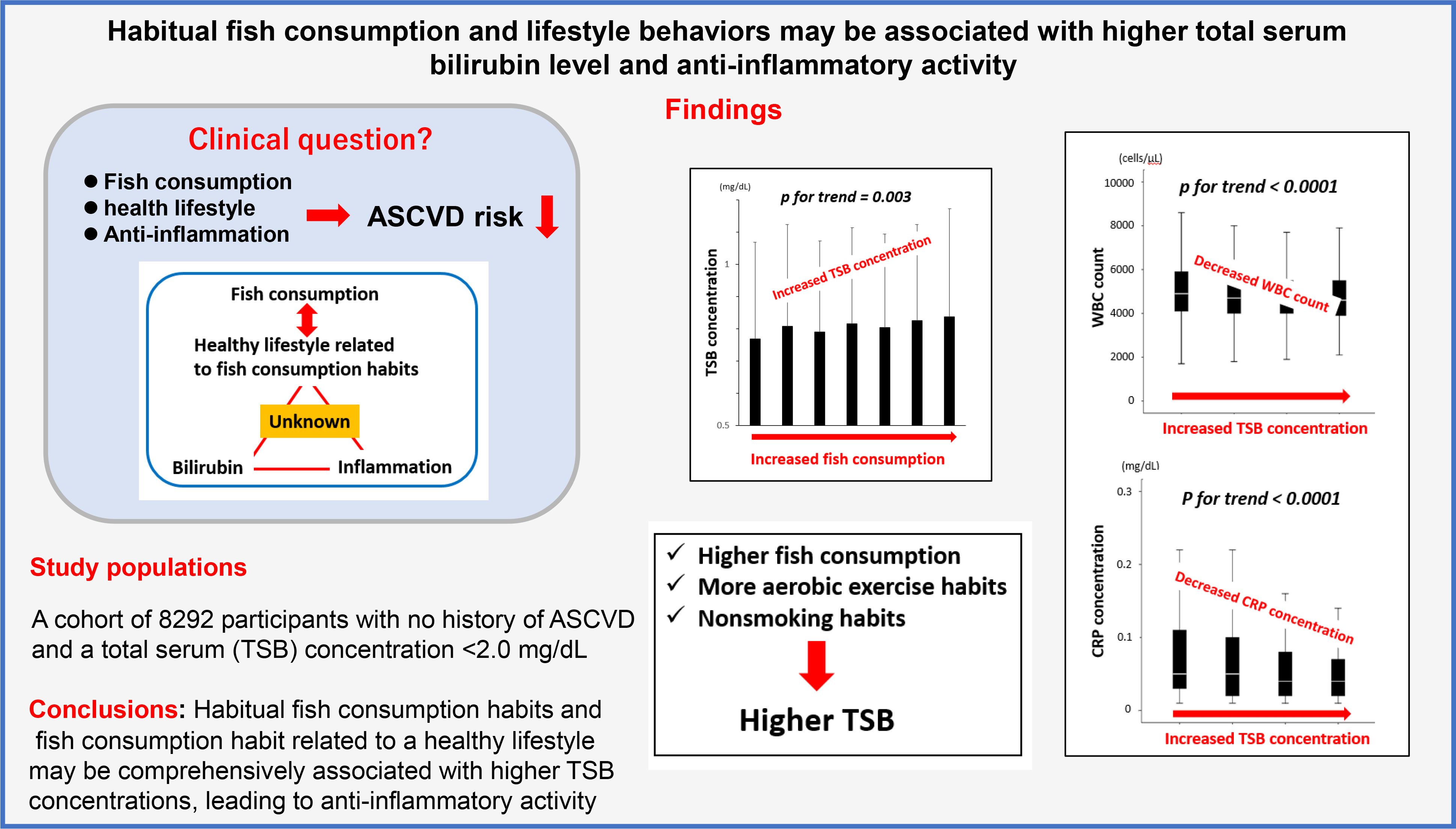Article contents
Habitual fish consumption and healthy lifestyle behaviours may be associated with higher total serum bilirubin level and anti-inflammatory activity: a cross-sectional study
Published online by Cambridge University Press: 05 May 2023
Abstract

Habitual fish consumption and a healthy lifestyle are associated with lower atherosclerotic CVD (ASCVD) risk. Mildly elevated bilirubin, an end product of Hb metabolism, may be associated with anti-inflammatory effects, suppressing ASCVD risk. No data exist on the relationship between fish consumption, total serum bilirubin (TSB) and inflammation in clinical settings. We conducted a cross-sectional study between April 2019 and March 2020 in a cohort of 8292 participants (average age, 46·7 (sd 12·9) years and 58·9 % men) with no history of ASCVD and TSB concentrations < 2·0 mg/dl. Multiple stepwise regression analysis showed Hb concentrations were a solid positive determinant of TSB concentrations (β = 0·302, P< 0·0001). Fish consumption (β = 0·025, P= 0·019) and aerobic exercise (β = 0·021, P= 0·043) were statistically weak but significantly positive determinants of TSB concentrations. Cigarette smoking negatively affected TSB concentrations (β = −0·104, P< 0·0001). Moreover, with increasing fish consumption, the proportion of participants with a habit of cigarette smoking decreased, and that of participants who engaged in aerobic exercises increased (P< 0·0001 for both). Furthermore, as TSB concentrations increased, the leukocyte counts and C-reactive protein concentrations decreased (P< 0·0001 for both). In conclusion, despite the lesser relevance given to TSB concentrations than Hb concentrations, higher fish consumption and healthier lifestyle behaviours related to fish consumption habits may be additively or synergistically associated with higher TSB concentrations and anti-inflammatory activity, leading to attenuated ASCVD risk. Further investigations are needed to clarify the causal relationships between these factors.
- Type
- Research Article
- Information
- Copyright
- © The Author(s), 2023. Published by Cambridge University Press on behalf of The Nutrition Society
References
- 1
- Cited by





